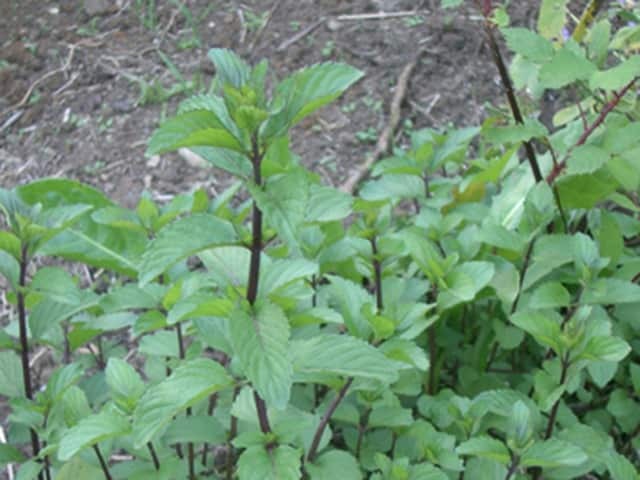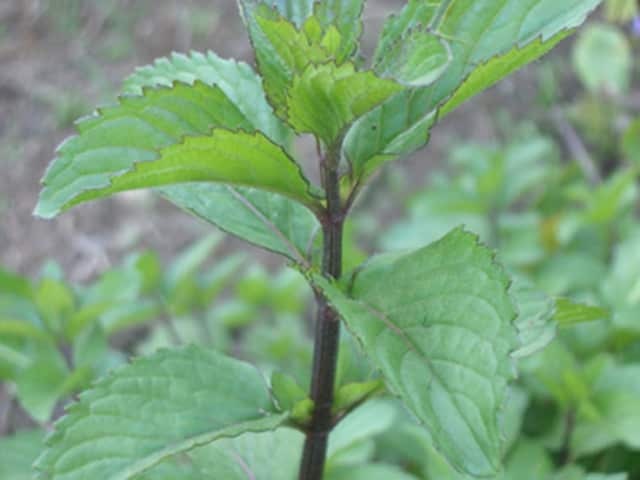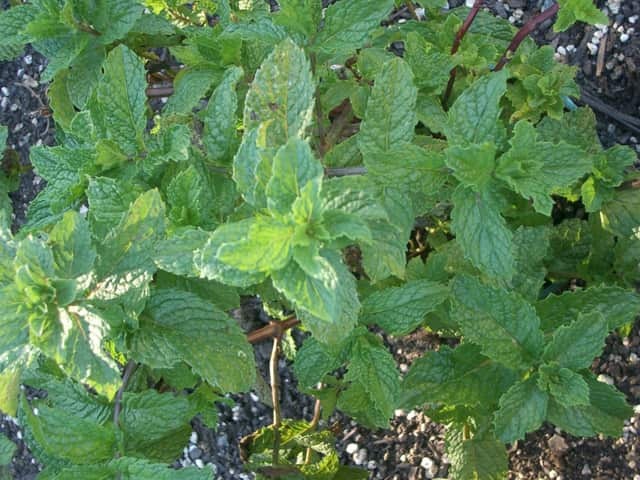Main menu
Common skin conditions

NEWS
Join DermNet PRO
Read more
Quick links
Common name: |
Apple Mint, Curly Mint, Pennyroyal, Peppermint, Pineapple Mint, Spearmint, Water or Bog Mint, hortela, menta, mentha montana, menthe, nane. |
|
Botanical name: |
Mentha spp.: Mentha aquatica, M. piperita, M. pulegium, M. spicata, M. suaveolens. |
|
Family: |
The Labiatae (Lamiaceae) are mostly herbs or shrubs comprising about 200 genera and 3,200 species. The family is classified into eight groups based on highly technical characters. Most of the economically important species are used for their essential oils and bitter principles. Lavender, patchouli, rosemary, sage, spearmint, peppermint, basil, thyme, marjoram, savoury, oregano, pennyroyal, catnip, bee balm, horehound, yerba buena, hyssop and others are important as herbs or spices or in perfumery, medicine or other minor applications. |
|
Origin: |
The 25 to 30 species of Mentha are native or naturalized to north temperate regions, Australia and South Africa. They may have originated from the Mediterranean. |
|
Description: |
Mints are branching herbs or shrubs. Many are perennials with leafy runners, stolons or underground rootstocks. Almost all have essential oils and half a dozen species are cultivated. The leaves are opposite or whorled, and are simple or occasionally pinnately compound; stipules are absent. The flowers are bisexual and zygomorphic. The fruit consists of four 1-seeded nutlets that rarely may be fleshy and drupaceous. |
|



Uses: |
Peppermint oil has long been an extremely popular flavouring agent in products ranging from chewing gum to after-dinner mints. Medicinally, it is mainly used to aid the various processes of digestion although, in 1990, the United States Food and Drug Administration declared peppermint oil to be ineffective as a digestive aid and banned its use as a nonprescription drug for this purpose. The active constituents are found in the essential oil, mainly menthol and carvone. |
|
Allergens: |
Menthol and L-carvone appear to be the main allergens. Mint also contains 1,8-cineole, acetaldehyde, acetic-acid, alpha-amorphene, alpha-cadinene, alpha-carotene, alpha-copaene, alpha-gurjunene, alpha-pinene, alpha-terpinene, alpha-terpineol, alpha-thujone, alpha-tocopherol, aluminium, amyl-alcohol, amyl-valerate, anethole, azulene, benzoic-acid, beta-betulenol, beta-carotene, beta-caryophyllene, beta-copaene, beta-ionone, beta-pinene, beta-thujone, beta-ylangene, betaine, bicycloelemene, bisabolene, cadinene, calcium, camphene, carvacrol, carveol, carveol-acetate, carvone, caryophyllene-oxide, cedrene, cedrol, choline, chromium, cineole, cinerol, cinnamic-acid-methyl-ester, cis-piperitol, cis-roseoxide, cis-sabinol, citronellol, cryptone, flavons hymenoxin, iron, isoamyl-phenylacetate, isobutyric-acid, isomenthol, isomenthol-acetate, isomenthone, isomenthyl-acetate, isopulegol-acetate, isorhoifolin, isovaleraldehyde, isovaleric-acid, isovaleric-acid-n-octyl-ester, jasmone, lavandulol, ledol, limonene, linalool, luteolin, menthol, menthone, menthoside, menthyl-acetate, menthyl-isovalerate, menthyl-valerate, myrcene, myrtenol, neoisomenthol-acetate, neomenthol, neomenthone, neomenthyl-acetate, nerolidol, nevadensin, octan-3-ol, p-cymene, p-cymol, pectin, pent-cis-2-en-1-ol, perillyl-alcohol, phellandrene, phenylethanols, phenyl-propyl-pyridines, phosphorus, pinene, piperitenone, piperitone, piperitone-oxide, pulegone, pyridine, rosmarinic-acid, sabinene, sabinene-acetate, sabinene-hydrate, salvigenin, sideritoflavone, silicon, terpinolene, thymol, trans-piperitol, trans-roseoxide, vanillin, viridiflorol, xanthomicrol |
|
Allergy: |
Irritant and allergic contact dermatitis have both been reported. Dermatitis in two bartenders was attributed to contact with Mentha citrata (Bergamot mint). |
|
Cross-reactions: |
||
Other information: |
||
Patch test: |
Leaf as is, peppermint oil 2%, Menthol and L-carvone. |
|